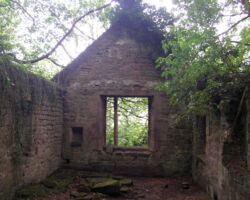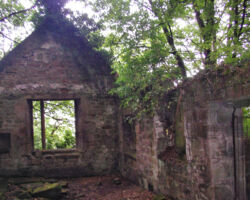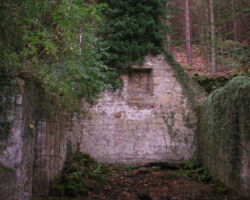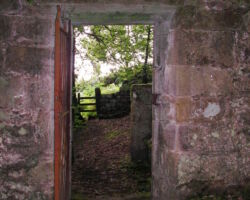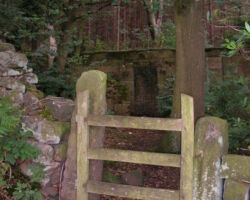Trinity Chapel is located to the west of Ogston reservoir, a church was recorded on the site in the Domesday survey of 1086 and a 13th century reference in the documents of Darley Abbey mentions what is now merely a footpath to the church as Churchgate Lane. The will of Hugh Revell of Shirland dated 15th May, 1504, states: “I will that the Trinitie Chapel have my chalez, the which is now in their possession, for ever.” There is no subsequent record of this chalice, which may have gone missing during the Civil War.
The present Chapel is believed to have been completely rebuilt in the early 1500’s, possibly a short time before the Reformation, about 1520-1530. According to tradition, the two bells which the Chapel once possessed were stolen by Oliver Cromwell during the Civil War.
The Chapel was served only four or five times a year by the Rector of Morton, that is, up to the division from the Parish of Morton in 1758. Whilst attached to Morton it was a Chapel of Ease and possessed neither the right of baptism nor sepulture. However, tradition relates that an unknown man found dead by the wayside was, in fact, interred in the Chapel grounds.
Two peculiar customs of the Chapel are noteworthy. One is that the women all sat on the North side of the Chapel and all the men on the South side, except in the chancel where there was no such separation.
Secondly, on Trinity Sunday (Sunday following Whit Sunday), also known as The Wakes Sunday, people flocked to the spot in great numbers and not only was the Chapel overcrowded, but the hillside as well, so that it almost presented the appearance of a fair. From the record of the Archdeacon Butler’s visitation on 16th July, 1823, we learn that at that date the Chapel had accommodation for about 100 people and was attended by a congregation of 50. However, in 1841 the Reverend Lund of Morton wrote “Trinity Chapel is almost deserted; frequently there are no worshippers at all. By this date the population of Brackenfield was concentrated around the Green and the site of the Chapel was relatively inaccessible and in winter this remoteness meant that the National School was often used for worship.
On the 18th May, 1913 the first service was held in the ruins of Trinity Chapel since it was deserted in 1857 following the investiture of Brackenfield Church.


